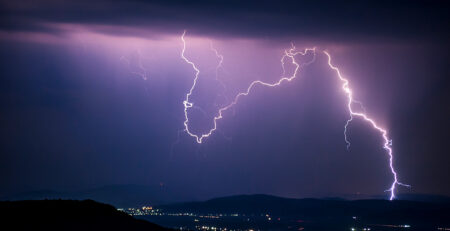Difference between earthing system and Lightning Protection System
What is the earthing system?
An earthing system is a connection of the electrical system with the ground or earth. In case any electrical fault occurs in the electrical circuit the fault current or surge current pass through the earthing connection to the ground without harming or damaging the whole electrical system. There are mainly two different types of earthing systems, they are
- Conventional earthing system and
- Advanced earthing system
1. Conventional earthing system
This type of earthing system has been used since the early age. This is the most easy and cost-efficient way of earthing arrangement. Iron rod, charcoal and salt are the main components that are being used here. A big hole is dug in the ground. Then the iron rod is placed inside the whole and a specific ratio of salt and charcoal is used to fill up the hole along with mud and water. A wire from the main electrical supply is connected with the iron rod. This whole arrangement costs really less. Due to its corrosive property iron rod does not last longer and this earthing system demands time to time maintenance and also does not offer too much accuracy. After that GI Rod or galvanised iron rod and GI Pipe also being used, which last more as it is made of galvanised iron and has less corrosive property.
Here, we realize the need of an upgraded earthing system and advanced earthing system takes the place.
2. Advanced earthing system
The basic arrangement is the same here. In place of iron rod, gi rod or gi pipe, copper rode, copper bonded rod, copper electrode, pre welded copper bonded rod are being used. Copper is an excellent carrier or electricity also it has almost no corrosion property, which makes it a great earthing product. In order to pass the surge current properly to the ground, the resistivity of the soil also plays a huge role. In order to decrease the resistivity there are several earth enhancing compounds available in the market, such as BFC or back Fill Compound, Carbogem, Conductive Gel. Depending on the type of soil and its resistivity different kinds of chemical compound is used in order to enhance the resistivity of the soil and it also increases the efficiency of the whole earthing system.
What is lightning?
When a high energy luminous discharge takes place from the thundercloud to the ground, which is accompanied by thunder, it is called lightning. There are basically three types of discharges that happen in the atmosphere. They are
- Thundercloud (intra-cloud)
- One cloud to another (inter-cloud) and lastly,
- Cloud to the ground (CG).
The last one is considered as a dangerous one, as it causes damage to the properties and living beings. Lightning generally hits the pick of any object, which is the highest one in the surrounding area, such as water tanks, any tower, palm tree or on any tree, which is tall enough. This high electrical discharge can lead to fire breakdown as well, which will eventually cause loss of life and property.
There are two types of lightning strikes,
- Direct lightning Strikes and
- Indirect lightning Strikes
Direct Lightning
When we see lightning as a bolt of electricity from the sky, it directly hits an object or a person, that is called direct lightning. When it directly hits an object then jumps into the air and strikes another object, that is known as side flash.
We often hear about unfortunate incidents, such as a person standing beside a tree gets hit by a lightning strike. This is the example of a side flash. The humidity of the surrounding air welcomes this kind of unwanted situation.
Indirect Lightning
As the name suggests, it does not hit an object directly. There are two ways indirect lightning can happen. Sometimes, a bolt of lightning strikes an object or ground and travels through the ground until it encounters another object. And the other one is the side flash, which we have already discussed.












Leave a Reply